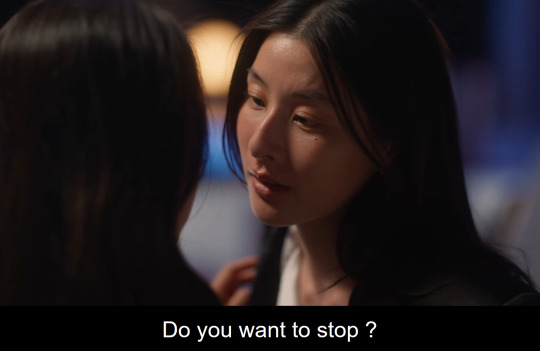#reverse check
Explore tagged Tumblr posts
Text

MOCHA LOVE
by
JAEVONN™
#MochaAirJordan1#Jordan1Mocha#AirJordan1#Jordan1#SneakerHeads#SneakerAddict#Kickstagram#ShoeGame#SneakerCollection#JordanRetro#MochaJordans#NikeAirJordan#SneakerCulture#SneakerFreak#SoleCollector#FreshKicks#HypeBeast#Streetwear#SneakerCommunity#JordanAddict#OGJordan#HeatOnFeet#RetroJordans#travis scott#reverse check#travis scott 1s#air jordan art
20 notes
·
View notes
Note
So.... what are your thoughts on Ace's UM, if you haven't been asked this already?
sneaky magic for the sneakiest boy

no but really, I think it fits him really well! I had thought his UM would probably involve something kinda sleight-of-handy or pickpockety! and I looooved that it made such a nice loop-around back to episode 1. ❤️ I was. kind of half-expecting him to just run out and punch Riddle in the nose again. but instead this time 'twas he who offed the queen's head! it was great! and he did it while stone-cold terrified out of his mind! because Ace is the only remotely normal or well-adjusted person at NRC and therefore the only one who is like "we're going to literally die, this is super effed up". but he did it anyway!!!! I AM SO PROUD
#art#twisted wonderland#twisted wonderland spoilers#twisted wonderland episode 7 spoilers#twisted wonderland book 7 spoilers#twisted wonderland episode 7 part 12 spoilers#twisted wonderland book 7 part 12 spoilers#also love how it complements deuce's magic! they are two of a kind ❤️♠️#i do think bet the limit fits the 'uno reverse card' description more though#like...okay they haven't really said much on how joker snatch works#(literally ace went 'we'll talk about it later')#but i think it's not supposed to be inherently retaliatory if that makes sense#the japanese is something like 'put an ace up my sleeve'#which implies to me that it's not really an in-the-moment thing? i think he can steal it and hold on to it for a while probably#like he might be able to snatch it and then use it on someone else later rather than it being reflected back on the original caster#versus deuce's being that he punches you back with your own punch (and/or other various punches he's acquired)#(a connoisseur of fine punches)#i am 100% guessing though so who knows! we will find out later i presume#now the only one left to get their um is grim maybe 👀#(i mean i would also love to see some staff ums HEY TWST THAT WOULD BE COOL)#(but like. narratively speaking and all)#oh and maybe crowley's depending on how plot-important he actually ends up being#what if it turns out nothing's going on with crowley and he's actually completely irrelevant#he tears his mask off and he's just some random dude who has zero idea of what's happening#nobody's been orchestrating shit#everyone's just been getting radioactive poisoning from the stone adeuce replaced in the chandelier back in the prologue#this was all a cautionary tale about getting the blot levels in your school's hvac system regularly checked
2K notes
·
View notes
Text
Was never that into Reverse Falls, this isn't even a really thought out post, just I thought it would be funny if Reverse!Ford and Reverse!Bill actually liked each other, but evil
How it's going:

vs How it started:



Audio from here (Loouud warning)
#my post#my art#gravity falls#stanford gleeful#will cipher#reverse falls#the exact logistics here aren't clear to me and this probably wont go any further#all i know is that pacifica is a girl scout and the gleefuls (reversed!pines) are a happily evil family#theres a lot of awesome reverse falls takes by lotsa users go check em out :D
981 notes
·
View notes
Note
Do you have an ideas for a Shadybug and Claw noir version of Coccinelle and Lady noir?

It’s finally here!
They absolutely loath each other and refuse to work together. Ever.
Loveybug versions of Noire and Coccinella can be found here
#I’m so sorry this took like- *checks* nearly a year to respond to this ask#I just really wasn’t sure what direction to go in#I was considering making a “good” version of Coccinella instead but in the end I decided to go all in with the edgy#miraculous ladybug#kwami swap#re-verse au#miraculous ladybug reverse#miraculous ladybug re-verse au#miraculous coccinella#ask#mlb#my art#art#fanart#lila rossi#marinette dupain cheng#ml#shadybug#claw noir#paris special#reverse miraculous#reverse coccinella#reverse noire#reverse lady noire#miraculous ladybug fanart#re-verse Coccinella au
750 notes
·
View notes
Text







*Reverses your Christmas*
A gift from @i-am-as-normal-as-you-are to all of you :) we really wanted the boys to get along for once, and what better occasion than Christmas? anything to make the Edwins happy!
#dbda#dead boy detectives#payneland#reverse verse#palasaki#only a little tho#christmas#the rv boys usually go to church on christmas tho charles only does so to be supportive/a menace#the kfc joke is a japanese thing#both edwins love the lights and the whole process of decorating#charles and edwin have been waiting decades to make the chorb joke#luckily it landed!#the crystal are used to spending the season either on boring dinners with their parents or alone#they get a lot of presents tho#charles likes to check on his parents on christmas though he doesn't remember them being this calm when he was alive#i was going to make a joke about crystal being visited by three ghosts (niko edwin and charles) because a christmas carol is my favorite#christmas story but if i got distracted that would get a plot#so i decided to leave it#don't worry the charles will probably go back to hating each other after this#merry crisis everyone
893 notes
·
View notes
Text
cuddling with a cute boy and holding them close so you can whisper everything that you know will fluster them in their ear. getting them worked up and squirming before pivoting to asking them questions.
"i know you're imagining a scene in your head, what's got you so turned on, baby?"
"come on, don't cower away now. tell me every detail you can think of."
"stop hiding your face. look at me. now, tell me what turns you on about [embarassing detail]."
"how cute, you can barely get a word out can you?"
cuddling a cute boy and embarrassing them until they're panting into your chest, gripping onto your shirt, before finally climbing atop them and landing a sharp bite on their neck.
"i guess i'll put you out of your misery, kitty, but you'll have to thank me for giving you what you clearly want so badly."
#shoutout to yaknowlikenyah#who Gets It#also check out this reverse pov bottom post i made#living the best of both worlds#while unpacking my need to be embarrassed#they speak#angel.queue#gel.⬇️#mlm nsft#nblm nsft#nblnb nsft#trans nsft#nsft t4t#t4t dom#ftm t4t#t4t bottom#t4t nsft#ftm kitten#ftm sub#ftm dom#ftm top#ftm nsft
2K notes
·
View notes
Text
13 years of longing and she does the sexiest thing ever

#consent is so sexy?!?!?#the little check in literally made me pause and take a minute to just breathe 'cause we see this rarely and i appreciate it so much#also didn't wan from affair also wait 13 years?? HMM makes you think#reverse with me#reverse with me the series#karankliao#thai gl#thai drama#gl series#gl drama#gl show#tdrama#glmine
237 notes
·
View notes
Text
“Humans in the loop” must detect the hardest-to-spot errors, at superhuman speed

I'm touring my new, nationally bestselling novel The Bezzle! Catch me SATURDAY (Apr 27) in MARIN COUNTY, then Winnipeg (May 2), Calgary (May 3), Vancouver (May 4), and beyond!

If AI has a future (a big if), it will have to be economically viable. An industry can't spend 1,700% more on Nvidia chips than it earns indefinitely – not even with Nvidia being a principle investor in its largest customers:
https://news.ycombinator.com/item?id=39883571
A company that pays 0.36-1 cents/query for electricity and (scarce, fresh) water can't indefinitely give those queries away by the millions to people who are expected to revise those queries dozens of times before eliciting the perfect botshit rendition of "instructions for removing a grilled cheese sandwich from a VCR in the style of the King James Bible":
https://www.semianalysis.com/p/the-inference-cost-of-search-disruption
Eventually, the industry will have to uncover some mix of applications that will cover its operating costs, if only to keep the lights on in the face of investor disillusionment (this isn't optional – investor disillusionment is an inevitable part of every bubble).
Now, there are lots of low-stakes applications for AI that can run just fine on the current AI technology, despite its many – and seemingly inescapable - errors ("hallucinations"). People who use AI to generate illustrations of their D&D characters engaged in epic adventures from their previous gaming session don't care about the odd extra finger. If the chatbot powering a tourist's automatic text-to-translation-to-speech phone tool gets a few words wrong, it's still much better than the alternative of speaking slowly and loudly in your own language while making emphatic hand-gestures.
There are lots of these applications, and many of the people who benefit from them would doubtless pay something for them. The problem – from an AI company's perspective – is that these aren't just low-stakes, they're also low-value. Their users would pay something for them, but not very much.
For AI to keep its servers on through the coming trough of disillusionment, it will have to locate high-value applications, too. Economically speaking, the function of low-value applications is to soak up excess capacity and produce value at the margins after the high-value applications pay the bills. Low-value applications are a side-dish, like the coach seats on an airplane whose total operating expenses are paid by the business class passengers up front. Without the principle income from high-value applications, the servers shut down, and the low-value applications disappear:
https://locusmag.com/2023/12/commentary-cory-doctorow-what-kind-of-bubble-is-ai/
Now, there are lots of high-value applications the AI industry has identified for its products. Broadly speaking, these high-value applications share the same problem: they are all high-stakes, which means they are very sensitive to errors. Mistakes made by apps that produce code, drive cars, or identify cancerous masses on chest X-rays are extremely consequential.
Some businesses may be insensitive to those consequences. Air Canada replaced its human customer service staff with chatbots that just lied to passengers, stealing hundreds of dollars from them in the process. But the process for getting your money back after you are defrauded by Air Canada's chatbot is so onerous that only one passenger has bothered to go through it, spending ten weeks exhausting all of Air Canada's internal review mechanisms before fighting his case for weeks more at the regulator:
https://bc.ctvnews.ca/air-canada-s-chatbot-gave-a-b-c-man-the-wrong-information-now-the-airline-has-to-pay-for-the-mistake-1.6769454
There's never just one ant. If this guy was defrauded by an AC chatbot, so were hundreds or thousands of other fliers. Air Canada doesn't have to pay them back. Air Canada is tacitly asserting that, as the country's flagship carrier and near-monopolist, it is too big to fail and too big to jail, which means it's too big to care.
Air Canada shows that for some business customers, AI doesn't need to be able to do a worker's job in order to be a smart purchase: a chatbot can replace a worker, fail to their worker's job, and still save the company money on balance.
I can't predict whether the world's sociopathic monopolists are numerous and powerful enough to keep the lights on for AI companies through leases for automation systems that let them commit consequence-free free fraud by replacing workers with chatbots that serve as moral crumple-zones for furious customers:
https://www.sciencedirect.com/science/article/abs/pii/S0747563219304029
But even stipulating that this is sufficient, it's intrinsically unstable. Anything that can't go on forever eventually stops, and the mass replacement of humans with high-speed fraud software seems likely to stoke the already blazing furnace of modern antitrust:
https://www.eff.org/de/deeplinks/2021/08/party-its-1979-og-antitrust-back-baby
Of course, the AI companies have their own answer to this conundrum. A high-stakes/high-value customer can still fire workers and replace them with AI – they just need to hire fewer, cheaper workers to supervise the AI and monitor it for "hallucinations." This is called the "human in the loop" solution.
The human in the loop story has some glaring holes. From a worker's perspective, serving as the human in the loop in a scheme that cuts wage bills through AI is a nightmare – the worst possible kind of automation.
Let's pause for a little detour through automation theory here. Automation can augment a worker. We can call this a "centaur" – the worker offloads a repetitive task, or one that requires a high degree of vigilance, or (worst of all) both. They're a human head on a robot body (hence "centaur"). Think of the sensor/vision system in your car that beeps if you activate your turn-signal while a car is in your blind spot. You're in charge, but you're getting a second opinion from the robot.
Likewise, consider an AI tool that double-checks a radiologist's diagnosis of your chest X-ray and suggests a second look when its assessment doesn't match the radiologist's. Again, the human is in charge, but the robot is serving as a backstop and helpmeet, using its inexhaustible robotic vigilance to augment human skill.
That's centaurs. They're the good automation. Then there's the bad automation: the reverse-centaur, when the human is used to augment the robot.
Amazon warehouse pickers stand in one place while robotic shelving units trundle up to them at speed; then, the haptic bracelets shackled around their wrists buzz at them, directing them pick up specific items and move them to a basket, while a third automation system penalizes them for taking toilet breaks or even just walking around and shaking out their limbs to avoid a repetitive strain injury. This is a robotic head using a human body – and destroying it in the process.
An AI-assisted radiologist processes fewer chest X-rays every day, costing their employer more, on top of the cost of the AI. That's not what AI companies are selling. They're offering hospitals the power to create reverse centaurs: radiologist-assisted AIs. That's what "human in the loop" means.
This is a problem for workers, but it's also a problem for their bosses (assuming those bosses actually care about correcting AI hallucinations, rather than providing a figleaf that lets them commit fraud or kill people and shift the blame to an unpunishable AI).
Humans are good at a lot of things, but they're not good at eternal, perfect vigilance. Writing code is hard, but performing code-review (where you check someone else's code for errors) is much harder – and it gets even harder if the code you're reviewing is usually fine, because this requires that you maintain your vigilance for something that only occurs at rare and unpredictable intervals:
https://twitter.com/qntm/status/1773779967521780169
But for a coding shop to make the cost of an AI pencil out, the human in the loop needs to be able to process a lot of AI-generated code. Replacing a human with an AI doesn't produce any savings if you need to hire two more humans to take turns doing close reads of the AI's code.
This is the fatal flaw in robo-taxi schemes. The "human in the loop" who is supposed to keep the murderbot from smashing into other cars, steering into oncoming traffic, or running down pedestrians isn't a driver, they're a driving instructor. This is a much harder job than being a driver, even when the student driver you're monitoring is a human, making human mistakes at human speed. It's even harder when the student driver is a robot, making errors at computer speed:
https://pluralistic.net/2024/04/01/human-in-the-loop/#monkey-in-the-middle
This is why the doomed robo-taxi company Cruise had to deploy 1.5 skilled, high-paid human monitors to oversee each of its murderbots, while traditional taxis operate at a fraction of the cost with a single, precaratized, low-paid human driver:
https://pluralistic.net/2024/01/11/robots-stole-my-jerb/#computer-says-no
The vigilance problem is pretty fatal for the human-in-the-loop gambit, but there's another problem that is, if anything, even more fatal: the kinds of errors that AIs make.
Foundationally, AI is applied statistics. An AI company trains its AI by feeding it a lot of data about the real world. The program processes this data, looking for statistical correlations in that data, and makes a model of the world based on those correlations. A chatbot is a next-word-guessing program, and an AI "art" generator is a next-pixel-guessing program. They're drawing on billions of documents to find the most statistically likely way of finishing a sentence or a line of pixels in a bitmap:
https://dl.acm.org/doi/10.1145/3442188.3445922
This means that AI doesn't just make errors – it makes subtle errors, the kinds of errors that are the hardest for a human in the loop to spot, because they are the most statistically probable ways of being wrong. Sure, we notice the gross errors in AI output, like confidently claiming that a living human is dead:
https://www.tomsguide.com/opinion/according-to-chatgpt-im-dead
But the most common errors that AIs make are the ones we don't notice, because they're perfectly camouflaged as the truth. Think of the recurring AI programming error that inserts a call to a nonexistent library called "huggingface-cli," which is what the library would be called if developers reliably followed naming conventions. But due to a human inconsistency, the real library has a slightly different name. The fact that AIs repeatedly inserted references to the nonexistent library opened up a vulnerability – a security researcher created a (inert) malicious library with that name and tricked numerous companies into compiling it into their code because their human reviewers missed the chatbot's (statistically indistinguishable from the the truth) lie:
https://www.theregister.com/2024/03/28/ai_bots_hallucinate_software_packages/
For a driving instructor or a code reviewer overseeing a human subject, the majority of errors are comparatively easy to spot, because they're the kinds of errors that lead to inconsistent library naming – places where a human behaved erratically or irregularly. But when reality is irregular or erratic, the AI will make errors by presuming that things are statistically normal.
These are the hardest kinds of errors to spot. They couldn't be harder for a human to detect if they were specifically designed to go undetected. The human in the loop isn't just being asked to spot mistakes – they're being actively deceived. The AI isn't merely wrong, it's constructing a subtle "what's wrong with this picture"-style puzzle. Not just one such puzzle, either: millions of them, at speed, which must be solved by the human in the loop, who must remain perfectly vigilant for things that are, by definition, almost totally unnoticeable.
This is a special new torment for reverse centaurs – and a significant problem for AI companies hoping to accumulate and keep enough high-value, high-stakes customers on their books to weather the coming trough of disillusionment.
This is pretty grim, but it gets grimmer. AI companies have argued that they have a third line of business, a way to make money for their customers beyond automation's gifts to their payrolls: they claim that they can perform difficult scientific tasks at superhuman speed, producing billion-dollar insights (new materials, new drugs, new proteins) at unimaginable speed.
However, these claims – credulously amplified by the non-technical press – keep on shattering when they are tested by experts who understand the esoteric domains in which AI is said to have an unbeatable advantage. For example, Google claimed that its Deepmind AI had discovered "millions of new materials," "equivalent to nearly 800 years’ worth of knowledge," constituting "an order-of-magnitude expansion in stable materials known to humanity":
https://deepmind.google/discover/blog/millions-of-new-materials-discovered-with-deep-learning/
It was a hoax. When independent material scientists reviewed representative samples of these "new materials," they concluded that "no new materials have been discovered" and that not one of these materials was "credible, useful and novel":
https://www.404media.co/google-says-it-discovered-millions-of-new-materials-with-ai-human-researchers/
As Brian Merchant writes, AI claims are eerily similar to "smoke and mirrors" – the dazzling reality-distortion field thrown up by 17th century magic lantern technology, which millions of people ascribed wild capabilities to, thanks to the outlandish claims of the technology's promoters:
https://www.bloodinthemachine.com/p/ai-really-is-smoke-and-mirrors
The fact that we have a four-hundred-year-old name for this phenomenon, and yet we're still falling prey to it is frankly a little depressing. And, unlucky for us, it turns out that AI therapybots can't help us with this – rather, they're apt to literally convince us to kill ourselves:
https://www.vice.com/en/article/pkadgm/man-dies-by-suicide-after-talking-with-ai-chatbot-widow-says

If you'd like an essay-formatted version of this post to read or share, here's a link to it on pluralistic.net, my surveillance-free, ad-free, tracker-free blog:
https://pluralistic.net/2024/04/23/maximal-plausibility/#reverse-centaurs

Image: Cryteria (modified) https://commons.wikimedia.org/wiki/File:HAL9000.svg
CC BY 3.0 https://creativecommons.org/licenses/by/3.0/deed.en
#pluralistic#ai#automation#humans in the loop#centaurs#reverse centaurs#labor#ai safety#sanity checks#spot the mistake#code review#driving instructor
857 notes
·
View notes
Text

when does intelligence give way to madness?
a moment comes when a man becomes something else
#reverse 1999#r1999#reverse 1999 aleph#aleph#do i tag the rest#pfft#merlin#physician#idealist#fanart#titaniumart#this piece is a reference to the jekyll and hyde musical#if you like aleph. check out the song “i need to know”#and “the world has gone insane”#please and thank you!
102 notes
·
View notes
Text
Here's more Palestinians who have reached out to me and their fundraisers! If you can't donate, sharing some of their campaigns can help a lot.
@ahmed-omar0 - link - €4,674 raised of €50,000 goal
@samira-family - link - $1,884 raised of $20,000 goal
@abdallahblog0 - link - $1,026 raised of $30,000 goal
@mohammedrabah2 - link - €767 raised of €65,000 goal
@jomana-ha - link - $16,684 raised of $60,000 goal
@shaimaasblog - link - €2,916 raised of €50,000 goal
@nepalalser - link - €1,641 raised of €50,000 goal
@shamia962 - link - kr61,825SEK raised of kr250,000 goal
@ameertaimsalama1 - link - kr23,617SEK raised of kr200,000 goal
@abdallaalhaj - link - £600 raised of £50,000 goal
@lobnaalseer - link - €7,585 raised of €50,000 goal
@fahedshehab-new - link - €57,496 raised of €85,000 goal
@oday-alanqar1 - link - €191 raised of €50,000 goal
@kenzish - link - €9,825 raised of €50,000 goal
#not a heritage post#i checked them all and they're all vetted or at least clean in reverse image search (and gofundme donations are protected)#im starting to get a lot more of these#so ill make a post like this once a day rather than only reblogging 3 :thumbsup:
349 notes
·
View notes
Text

my contribution to the @brave-the-storm-r1999 zine! based on a tiny piece of official art of blonney 💕 i think her and desert flannel would be besties
also a chibi TTT! ❤️🩵

#genuinely everyone’s work is stunning so please check it out!#my style has changed soooo much since this#but i hope you enjoy it anyway!#reverse: 1999#reverse 1999#ttt reverse 1999#blonney reverse 1999#reverse 1999 blonney#blonney#jennifer woods#desert flannel#reverse 1999 desert flannel#desert flannel reverse 1999#reverse 1999 fanart#fanart#my art#zine work
174 notes
·
View notes
Text



some misc twst + pkmn doodles that are in varying states of completion--
(wips under here lol)




#twst#twisted wonderland#ram's art#jack howl#jamil viper#kalim al asim#art#im too tired to tag anything else rip#the scarbia doodles are a bit rough-- im sick rn and i dont have the motivation to finish them any better sry-#but this was relaxing to do so not a complete loss--?#... i also didnt check the colours of the scarabia pics on my phone so if they suck uhh no they dont uno reverse they're good promisee#oh and as for the pkmn picked uhhhhh#boltund is a DOG it RUNS 10/10 basically jack#anddd for kalim and was this close to choosing ludicolo (rain catching hat and dancing = partying ) but---#flygon seemed fun for him-- (goomy was picked soley due to the concept of kalim keeping the bud damp with his signature spell lol )#... (and i like goomy a lot)#thats all im typing now im gonna take a nap-#oh wait one more thing i guess congrats on jamil FINALLY getting to rest (his new jpn server b day card-)
164 notes
·
View notes
Text


hihihi oopsie omens au (by @asleepyy ) fanart bc im obsessed liek one of the best reverse omens au portrayal ive seen check them out :] !!
•
bonus doodle skdkfl

#srry for the double tagging btw kdkfld😞#also sorry for the amount of footnotes in the second drawing 😭😭😭 i rlly got carried away#jophiels hair is so fun to draw i love how hes drawn in the au#and azazels eyes r so cute i love drawing them endless black pits of sadness#my fallen angel 😔😔........#but yea check the comic out like im srs its good go#ineffable husbands#good omens#reverse omens#reverse omens au#crowley good omens#aziraphale good omens#good omens fanart#aziracrow#dahlia.art
890 notes
·
View notes
Text
I made this gif and i dont know if it's cursed or not

(original image by @scrufflesksunnide) you can find the OG image Here
#rain world#rw#rain world downpour#rw shipping#rw inv#rain world enot#rw enot#rw sofanthiel#rw survivor#rw reversal#this might be one of the most cursed things i've ever made#SCRUFFLES MADE THE IMAGE BY THE WAY#IF YOU SOMEHOW HAVENT CHECKED HIS WORKS OUT#DO IT RIGHT NOW#i only added stupid little gif parts with picmix lol
73 notes
·
View notes
Text



The case of the lighthouse leapers
That's right, more Niko angst, but most importantly, more Niko and Charles bonding! This is the beginning of the improvement for their relationship, finally.
This was, of course, a commission for @i-am-as-normal-as-you-are
#dbda#dead boy detectives#reverse verse#niko Sasaki#i mean knowing rv!crystal the fact that she cared enough to speak up is huge!#and Charles oh Charles#he has been trying to get rid of niko since the beginning and now he jumps to protect because he is GOOD#despite everything he is good#edwin is going through the gay horrors but this ain't about him#and do i speak Japanese?#no but do i have a friend who does? also no#but my girlfriend does have a friend who knows and she asked them to check what i wrote#apparently it's fine#also just to be clear Niko's dad is super dead#but Niko can't remember of course
522 notes
·
View notes
Note
I know you mostly focus on the Marika/Messmer relationship in your works (which can i just say i fucking ADORE IT IT'S SO GOOD GAAAH) but i wanted to ask, what do you think of the other parent? Who do you think Messmer's (and by extension Melina's) father is and what his relationship is with him? Is it Radagon? Godfrey? A secret third option perhaps??
im glad you enjoy my work!! as for your question, i think Messmer and Melina are like... parthenogenetic offsprings?? they are born of Marika only, which is why the game groups them in as brother and sister and they are the ones inheriting everything closest and most personal to Marika.
but i don't necessarily think they know each other exist, or at least it's my personal headcanon that Melina was born after Marika shattered the Elden Ring (at which point Messmer was already stuck in LoS, so he didn't know).
i actually think Marika only split into Radagon on the eve of Liurnia war, when Messmer had already been a grown young man fighting alongside Godfrey for a while. so technically, Messmer existed before Radagon. but on paper i guess the guy could be counted as Messmer and Melina's dad? cuz he's Marika still? (ugh my head)
but imo to Messmer and Melina they don't consider him their dad (and he doesn't consider them his. i lowkey think Messmer and Radagon despise each other 😭). they only regard themselves as Marika's children. at the same time, Messmer respects and trusts Godfrey, which is the closest he'll ever regard anyone else as a father figure.
#axydoesstuff#godfrey loves marika so much he passed messmer's vibe check 😭😭#ask#reply#also that's why i still dont know how to integrate Melina in my fanarts yet. because i feel like she has no connection to other siblings#if you subscribe to the theory Marika is Torrent's original owner and she gave him to Miquella (i also think she gave Ranni the spirit bell#when Miq divest himself of all things about his mother i guess he also abandoned Torrent and Melina just takes Torrent back from there#con of diving too much into the lore: i cant draw stuffs out of a vacuum anymore...#but im thinking of a way to put her into the reverse parenting AU#er brainrot
114 notes
·
View notes